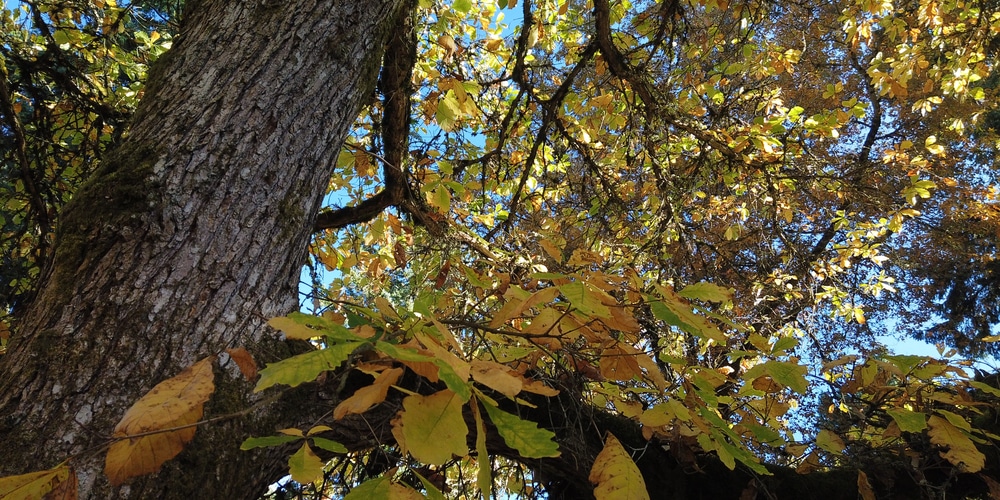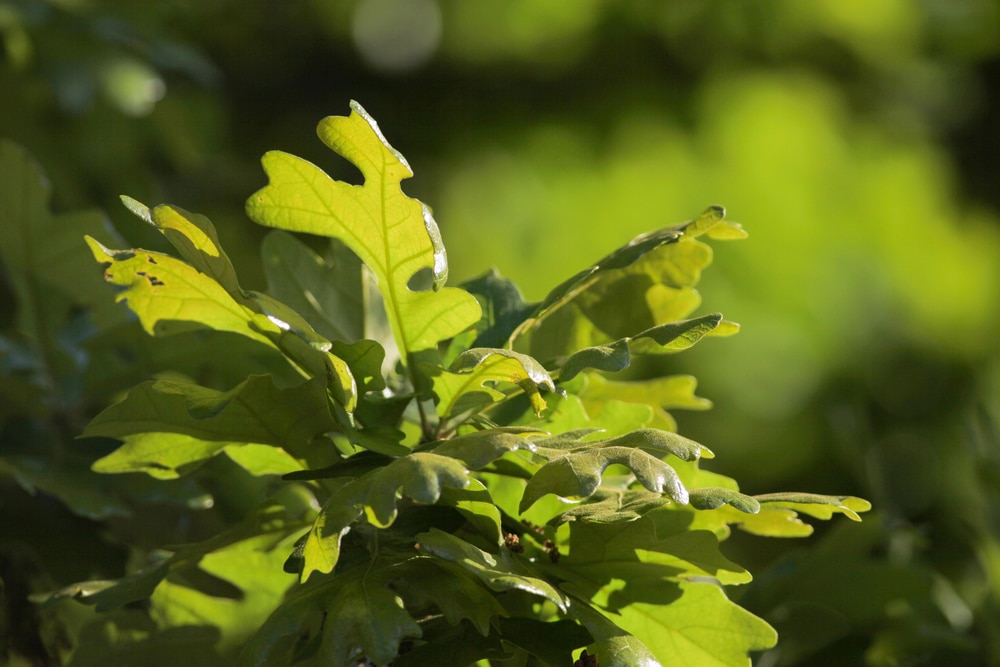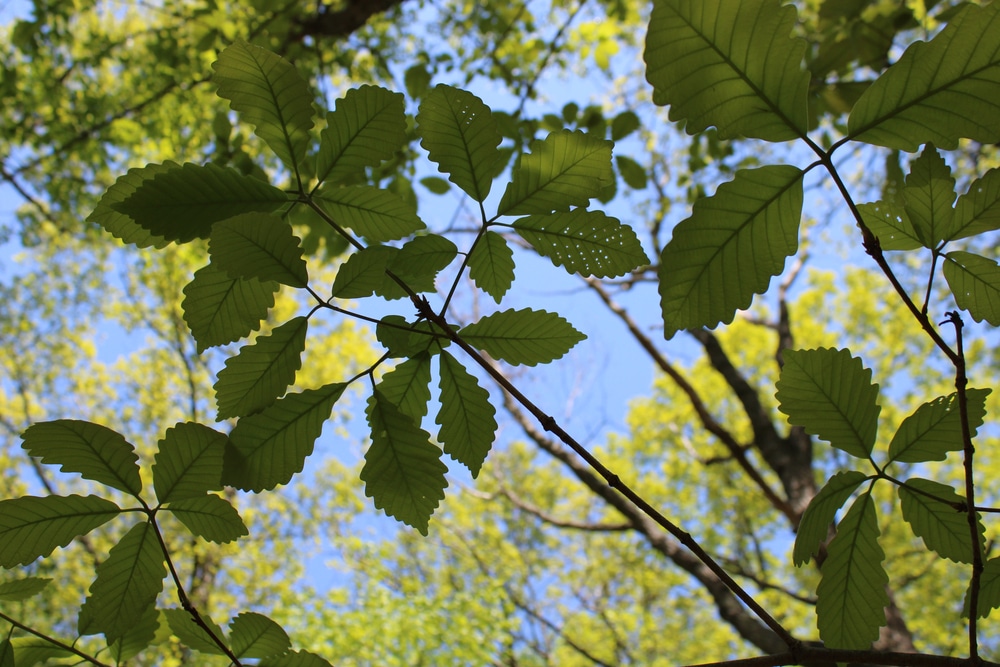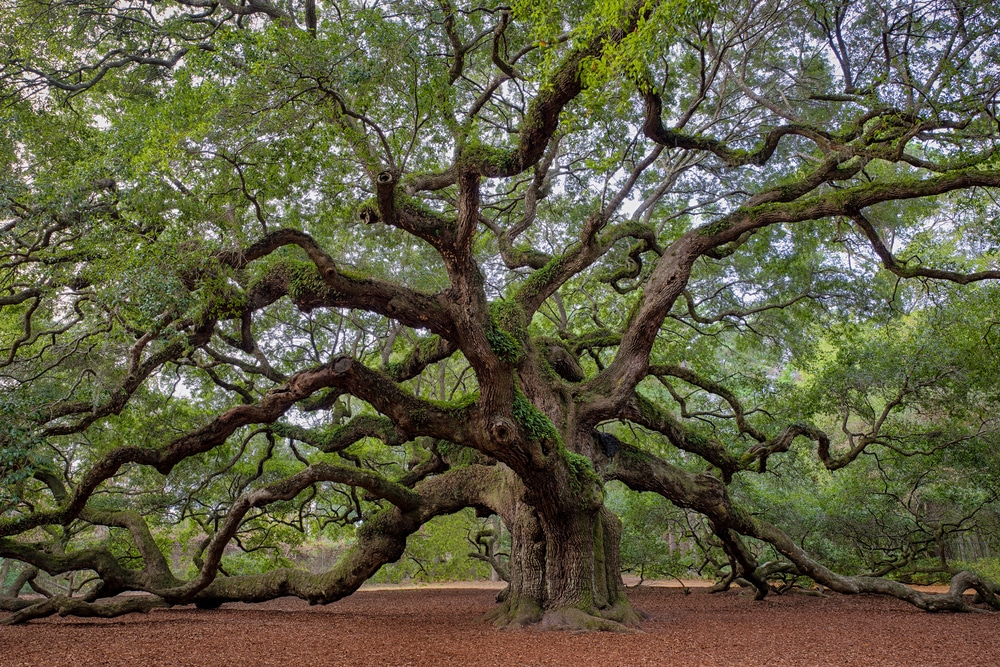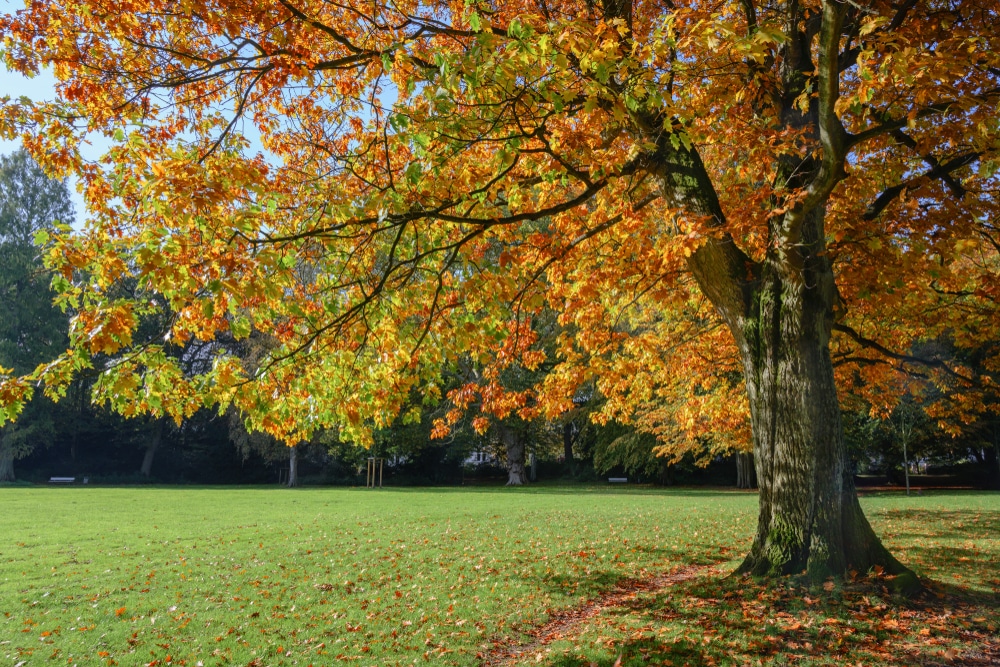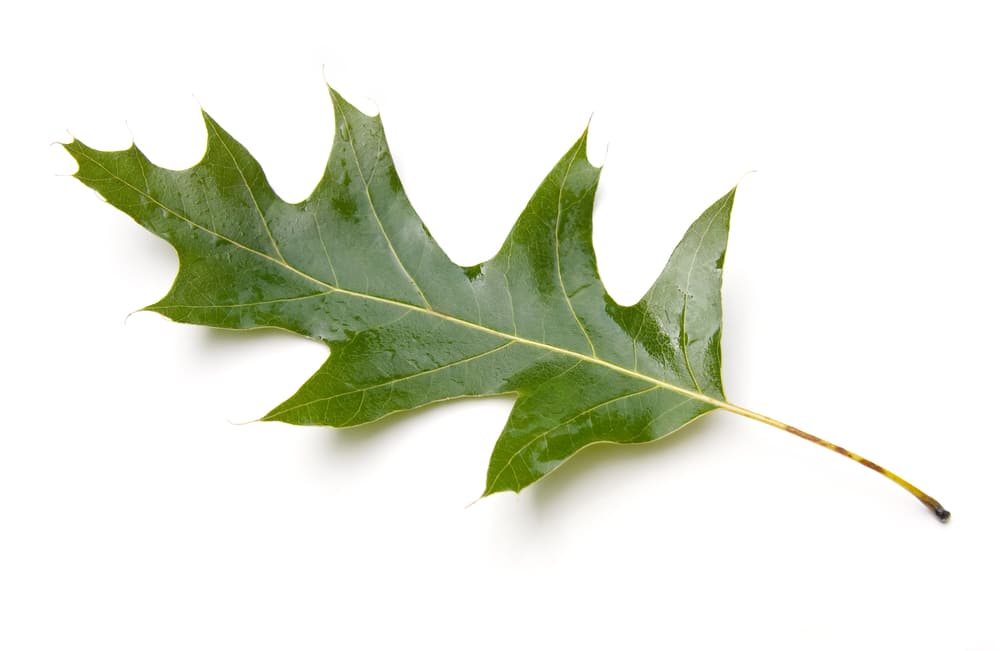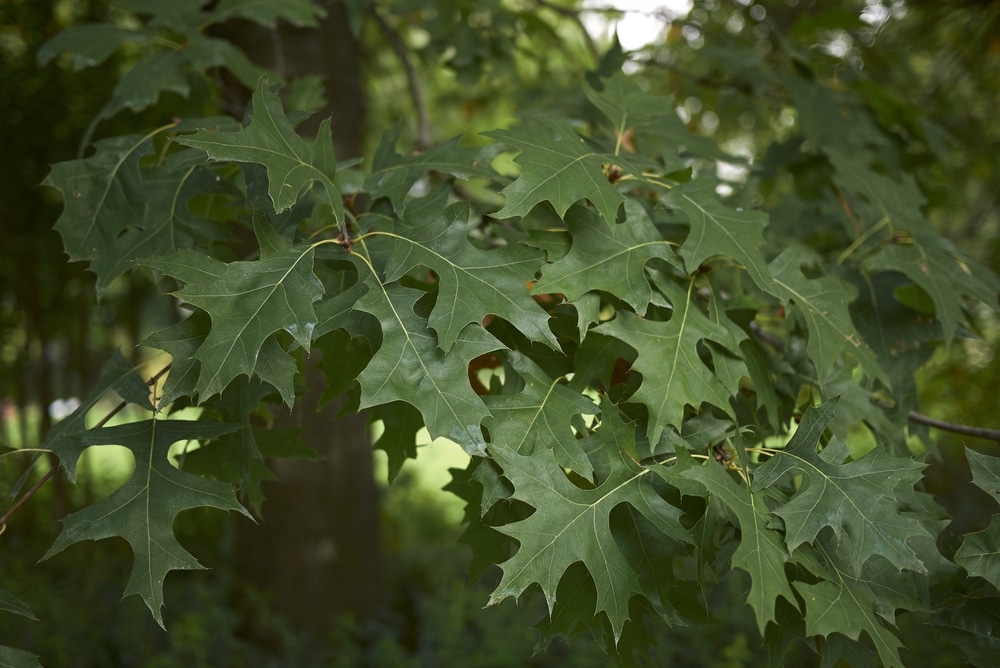Virginia experiences a mild climate which favors the growth of a variety of trees. However, today we’re going to be focused on oak trees. Check below the oak trees native to Virginia.
Virginia Oak Trees
Here are fourteen varieties of oak trees that you’ll find in Virginia:
White Oak (Quercus alba)
White Oaks exhibit excurrent growth and feature a rounded, spreading crown. The term excurrent refers to tree growth that is more vertical than horizontal. White oaks also produce catkins in the fall.
Post Oak (Quercus stellata Wangenh)
Post Oaks exhibit dense, foliated crowns and large, gnarled branches. It features an alternate leafing pattern. The Post Oak’s leafing pattern is simple, with each leaf featuring five rounded lobes that form a “T” shape.
Chestnut Oak (Quercus prinus)
The Chestnut Oak (sometimes referred to as a Rock Oak because it prefers rocky soils) grows along creeks and streambeds in western Virginia. The Chestnut Oak’s name comes from its leaf, which resembles a chestnut leaf.
Swamp Chestnut Oak (Quercus michauxii)
The Swamp Chestnut Oak is similar to the Chestnut Oak and features many of the same physical characteristics, including the characteristic chestnut-esque leaf. However, unlike the Chestnut Oak, the Swamp Chestnut Oak’s distribution is limited to eastern Virginia.
Live Oak (Quercus virginiana)
Live Oaks exhibit a stocky growth pattern, with wide, stout trunks and dense, spreading canopies. Live Oaks are a robust oak species; their wood, although hard to process, is prized for its density, strength, and durability.
Laurel Oak (Quercus laurifolia)
The Laurel Oak grows in southeastern Virginia in coastal habitats. It loves water and thrives in environments with frequent rain and loose, drainable soils. Laurel Oaks are rarely farmed or harvested for commercial applications.
Northern Red Oak (Quercus rubra)
The Northern Red Oak’s natural distribution covers the entire state of Virginia. In addition to Virginia, Northern Red Oaks are endemic to much of the eastern United States. The Northern Red Oak’s abundance and resilient wood make it an important timber crop in the United States.
Southern Red Oak (Quercus falcata)
Southern Red Oaks are endemic to much of Virginia but are absent from the most easterly of Virginia’s habitats. Like Northern Red Oaks, Southern Red Oaks have robust, decay-resistant wood. The strength of the Southern Red Oak’s wood makes it ideal for commercial construction applications.
Black Oak (Quercus velutina)
Black Oak is an adaptable species; its broad habitat tolerances allow the species to thrive in a wide range of habitats all across Virginia. In habitats with fertile, well-drained soils, the Black Oak can grow up to 80 feet tall.
Scarlet Oak (Quercus coccinea)
In Virginia, the Scarlet Oak is found everywhere except for a small part of southeastern Virginia. Scarlet Oaks is a robust oak species known for its drought tolerance and vigorous growth. The Scarlet Oak’s vigorous nature makes it a popular timber species.
Blackjack Oak (Quercus marilandica)
Blackjack Oak grows throughout Virginia (except along the Allegheny Mountains) in areas with poorly drained soils. The Blackjack Oak features a dark-brown, almost black bark. The Blackjack Oak also features a unique leaf that loosely resembles the foot of a duck.
Pin Oak (Quercus palustris)
Pin Oaks is a robust species of oak found predominantly in northern Virginia, with a few isolated pockets scattered throughout the state. Pin Oaks thrive in less than favorable habitats and are occasionally found in stands on land with poor soil conditions. Although hardy in nature, Pin Oak’s wood growth patterns make it unsuitable for many commercial uses, such as furniture building and flooring.
Water Oak (Quercus nigra)
In Virginia, the Water Oak’s range is limited to the southeast. The Water Oak exhibits an excurrent growth pattern and a rounded or pyramidal crown. The species has few commercial applications but is frequently planted as a shade species in southeast Virginia.
Willow Oak (Quercus Phellos)
Willow Oaks are found in east Virginia and prefer moist, well-draining soils. The Willow Oak’s name comes from the tree’s slender, lanceolate leaves that resemble willow leaves. Willow Oaks are fast-growing, long-lived species, making them popular choices for tree alleys in suburban neighborhoods.
